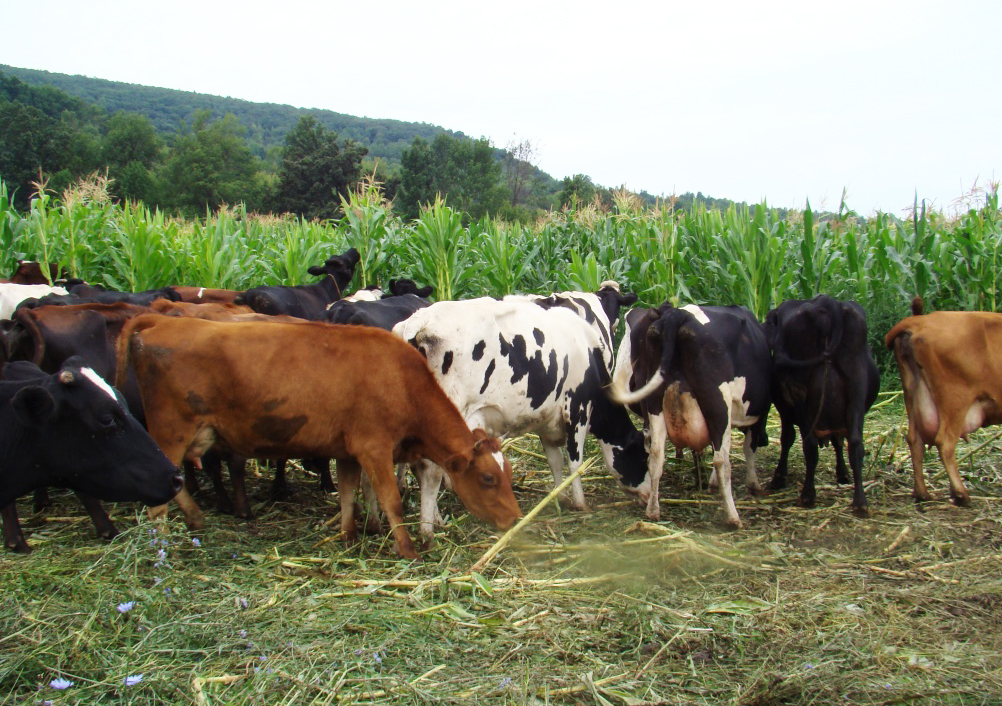
View Original article here

Tuesday, May 7, 2019 - At the North Dakota State University Dickinson Research Extension Center, one focus is improving crop and beef cattle production efficiency. Douglas Landblom, a beef cattle specialist, has found that multi-crop rotations with beef cattle can increase efficiency while decreasing inputs.
Landblom's research consists of studying the comparison of spring wheat grown continuously on the same land compared to spring wheat grown in a multi-crop rotation consisting of spring wheat, dual cover crop, silage corn, field pea-barley mix and sunflowers. Yearling steers grazed three of the rotation crops and the deposited manure and urine contributed to soil organic matter, providing a food source for soil microorganisms.
According to Landblom, the principles of regenerative agriculture are based in the context of improving soil health. Systems like expanded crop rotations allow soil biota, microorganisms, and fungi the opportunity to function at a higher level of efficiency. "Managing crops in a way that gives soil organisms the food necessary to perform is extremely beneficial," says Landblom.
During the first few years of the multi-crop rotation study, both spring wheat yields were 40 and 41 bushels per acre. However, Landblom found that by discontinuing fertilizer application on the spring wheat rotation reduced the cost for fertilizer and, when combined with an increase in soil-derived nitrogen, resulted in a $15 per acre greater net return for spring wheat grown in the crop rotation that included grazing.
"Increasing soil health results in greater biodiversity, while grazing reduces carbon dioxide emission, improves water cycles, and increases plant-available nitrogen," says Landblom. The research found that for every one percent increase in field soil organic matter content, there is potentially 16 pounds of nitrogen mineralized by soil microbes and available for plant growth.
"Replacing fertilizer with nitrogen produced by soil microbial processes is water-dependent," Landblom says. "Integrating crop and livestock systems increases soil organic matter and aggregation, which subsequently contribute to a soil's water-holding capacity and offers an opportunity to support better yields during moderate drought in semi-arid regions."
Winter crops like triticale, hairy vetch and winter rye seeded in the fall make excellent grazing crops the next spring for yearling steers, feeder heifers, cows and calves, or cull cows. Designing a grazing system that incorporates native range, when annual forages need time to grow, and a sequence of annual forages for grazing throughout the summer provides a measure of grazing flexibility.
Landblom found that yearling steers that grazed native range and multi-crop rotations gained 495 pounds after grazing 211 days. After that, the grazing steers were in the feedlot for 82 days and then slaughtered. "Feedlot average daily gain was 4.7 pounds per day and required 6.23 pounds of feed per pound of gain," Landblom says. "Compared to control steers that were finished in the feedlot, net return was greater for the extended forage grazing steers by $61 per steer."
In the past, producers have focused on the maximum yield that they can get from a field. However, Landblom explains that regenerative agricultural thinking still focuses on the need to produce, but also looks at more alternative ways to achieve maximum economic yield while also relying less on purchased inputs, like fuel, fertilizer, chemical, and labor, plus reducing environmental impact.
Experience has shown that producers who begin alternative production methods begin to see greater residual nitrogen the third or fourth year after initiation and, therefore, can begin reducing the amount of nitrogen fertilizer applied and subsequently increase their efficiency of the cropping and cattle systems while lowering their inputs.
Learn More at this Link